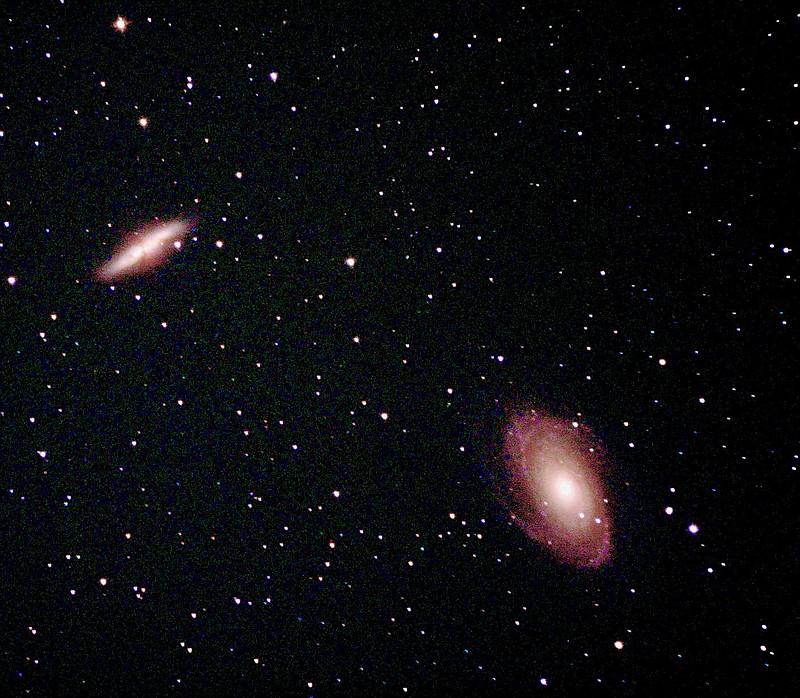It's galaxy season again! The Earth has moved along its orbit around the Sun in such a way that we begin to look beyond our own Milky Way galaxy to a position where we can see many other galaxies outside our own. These lie millions of light-years away! This makes all but a few very dim objects. Nevertheless, small telescopes of six inches or more will show them to the dedicated observer. Many amateur astronomers call these galaxies "faint fuzzies" because they will only be little smudges of light in the eyepiece except in the very largest telescopes.
Why bring up such faint objects that many readers of this column simply cannot find? I bring them up because if you find one, it will be a thrilling discovery!
It is possible to see about five galaxies, or a bit more under ideal conditions, with big binoculars. If you decide to hunt for a faint galaxy, use the biggest binoculars you can get. Many vendors sell binoculars whose front aperture is 70 or 80 mm. These are what you need. If you have these, look up some of these objects on the internet and use the accompanying internet maps to locate them. I would bring two things to your attention before starting your galaxy hunt: 1) Galaxies are difficult to find -- be prepared for frustration and 2) if you do find one, it won't look like the long exposure images gotten with the Hubble Space Telescope. For amateurs, they will always be faint. Here is a shortlist of some brighter ones you might be lucky enough to find: M81 and M82, near the Big Dipper [I have included an image of these two I made with a digital camera and an 8-inch telescope]. Look for M31 and M33 after September as these two are only visible then, and try for M51 near the tip of the handle of the Big Dipper also. This one is really faint but if you do find it, let me know. I don't have a prize for you, but you will deserve one! Find the darkest skies you can to hunt for any of these galaxies.
Around the constellation Leo the Lion, coming into best view in May, there are hundreds of faint galaxies to see but all of these take at least 8-inch telescopes. Amateur astronomy is one of the fastest-growing hobbies and, since the covid-19 pandemic, the hobby has grown even more because one can do it by oneself, away from others. I know telescope sales have really gone up lately and there are people here in northwest Arkansas that are using their new telescopes for the first time -- with exciting results. Go for some galaxies -- see as far as you can see!
Most of the planetary action in April occurs near dawn. Jupiter, Saturn and the Moon dodge near one another throughout April and May. The changing patterns of these planets' dances near one another make for fun binocular observing and if you have a telescope, don't miss Jupiter and Saturn! These planets can be seen near the southeast horizon before dawn--gotta get up early! Venus, our so-called sister planet, will return to the western sky after sunset. At first, it will be quite close to the western horizon but, as the next few months go by, Venus will be brighter and brighter and much easier to see.
Go for the night sky -- we start on a spring cycle of good weather for amateur astronomers. Good luck!
David Cater is a former faculty member of JBU. Email him at [email protected]. Opinions expressed are those of the author.

